Bread & Honey
A charming Victorian family card game involving Clowns, Queens, Kings, Maids and thirty-seven Blackbirds manufactured by Thos De la Rue, c.1900.

This charming game, based on the nursery rhyme “Sing a Song for Sixpence”, was registered in c.1896 and is played with a pack of fifty-three cards, consisting of four Clowns, four Queens, four Kings, four Maids (top row) and thirty-seven Blackbirds. The designer is uncredited but the style of drawing suggests it may have been Richard Doyle (1824-1883) who designed other games for De la Rue. See the Rules here→
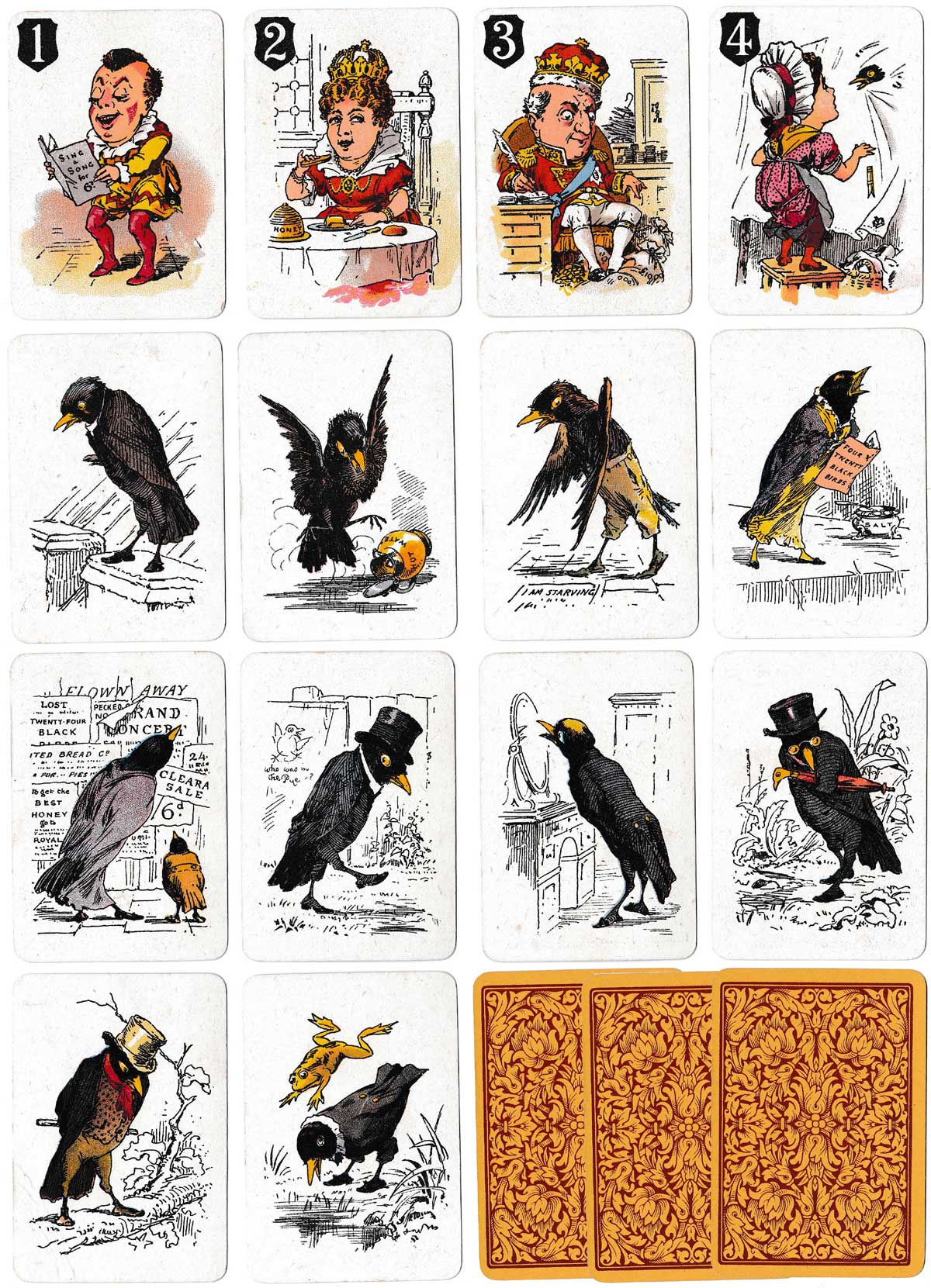
Above: “Bread & Honey” family card game manufactured by Thos De la Rue, c.1900. The game was later licensed to HP Gibson & Sons Ltd.
The clown card (number 1) actually reads "Sing a song for sixpence" and not "sing a song of sixpence" as we now know it.
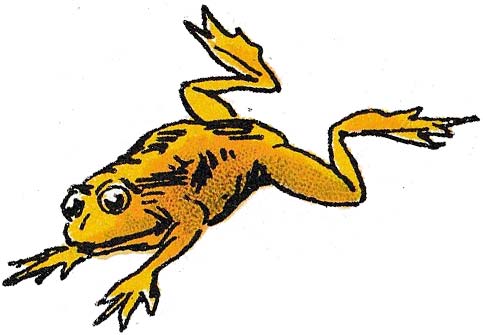
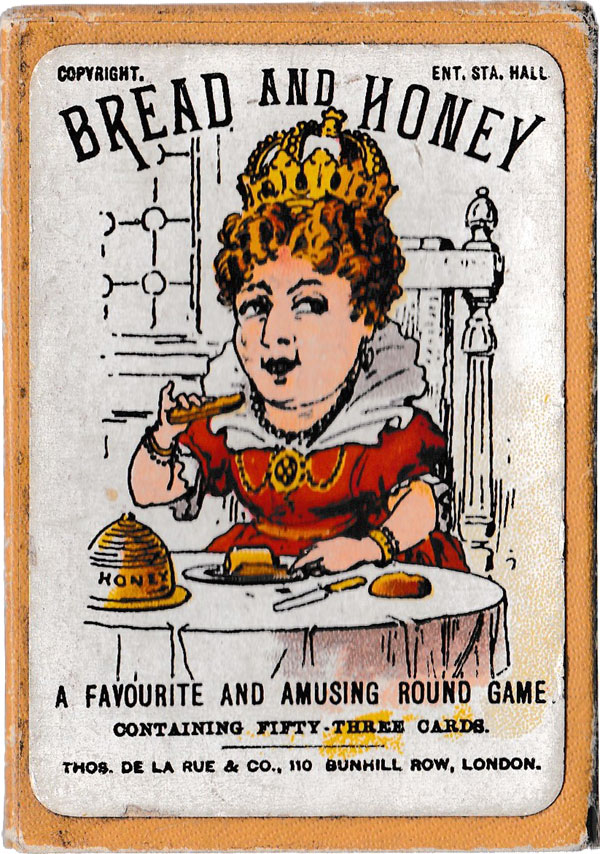
By Rex Pitts (1940-2021)
United Kingdom • Member since January 30, 2009
Rex's main interest was in card games, because, he said, they were cheap and easy to get hold of in his early days of collecting. He is well known for his extensive knowledge of Pepys games and his book is on the bookshelves of many.
His other interest was non-standard playing cards. He also had collections of sheet music, music CDs, models of London buses, London Transport timetables and maps and other objects that intrigued him.
Rex had a chequered career at school. He was expelled twice, on one occasion for smoking! Despite this he trained as a radio engineer and worked for the BBC in the World Service.
Later he moved into sales and worked for a firm that made all kinds of packaging, a job he enjoyed until his retirement. He became an expert on boxes and would always investigate those that held his cards. He could always recognize a box made for Pepys, which were the same as those of Alf Cooke’s Universal Playing Card Company, who printed the card games. This interest changed into an ability to make and mend boxes, which he did with great dexterity. He loved this kind of handicraft work.
His dexterity of hand and eye soon led to his making card games of his own design. He spent hours and hours carefully cutting them out and colouring them by hand.

Related Articles

Lobo
Lobo, the London Underground card game published by Thomas De la Rue & Co Ltd, 1930s.

Fairy Tales
the Game of Fairy Tales published by Multum in Parvo Co,, from 1896
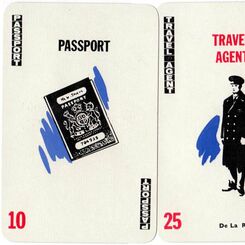
Travel Agent
Travel Agent is a card game designed by Martin A. Foley and manufactured by Thomas de la Rue & Co Lt...
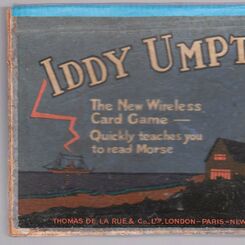
Iddy Umpty
“Iddy Umpty” card game based around learning to read the Morse Code Alphabet. by Thomas de la Rue & ...
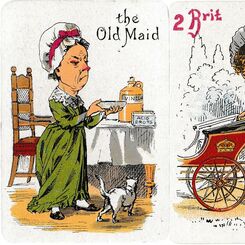
Spin & Old Maid
Lovely Victorian family card game with illustrations by the famous humorous artist, cartoonist and i...

Stop Thief & Snip-Snap
Another late Victorian family card game by Thomas de la Rue & Co Ltd, c.1895 with beautifully illust...
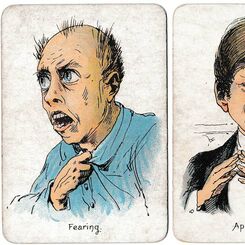
Moods & Faces
“Moods & Faces” round game by Thos de la Rue & Co Ltd,. c.1900.

Tempest
Tempest is a family card game designed by W. Heath Robinson and published by Thomas de la Rue & Co. ...

Golliwogg, c.1902
The stories about the Golliwogg and the Dutch dolls were written by Bertha Upton (1849-1912) and ill...

Kikit
Kikit is an indoor football game made by De la Rue, c.1920.
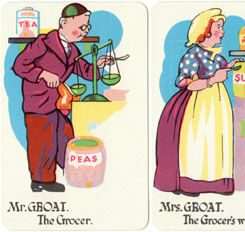
Happy Families, c.1950
Chad Valley “Happy Families” card game, c.1950.
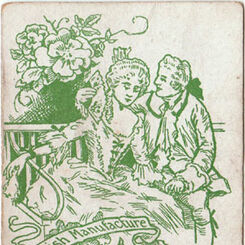
Happy Families, c.1930
“Happy Families” game published by Chad Valley c.1930 drawn in the slightly grotesque style of the V...
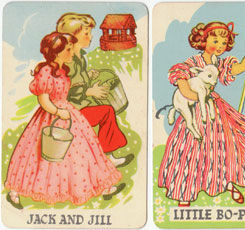
Nursery Rhyme Snap
Chad Valley ‘Nursery Rhyme Snap’ 1950, depicting ten popular nursery rhymes.

Golden Egg
Chad Valley “Golden Egg” card game.
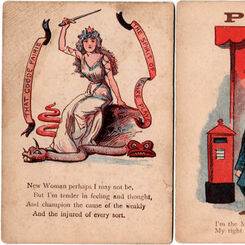
District Messenger
District Messengers were uniformed young men wearing little pill-box hats and mounted on bicycles wh...
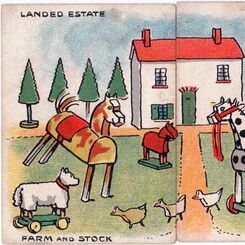
Bargains
“Bargains” was designed by George Lambert for C. W. Faulkner & Co in c.1900.

The New Game of Animals
Victorian card game with imaginatively designed letters which spell the name of an animal, with one ...

Waddy Productions
Waddy Productions Ltd was a member of the giant Amalgamated Press group and only published card game...

Snap Cards
Clifford Series Snap Cards, c.1950.

Cheery Families, c.1893
Cheery Families card game designed by Richard Doyle and printed by De La Rue & Co., Ltd, c.1893
Most Popular
Our top articles from the past 60 days






















